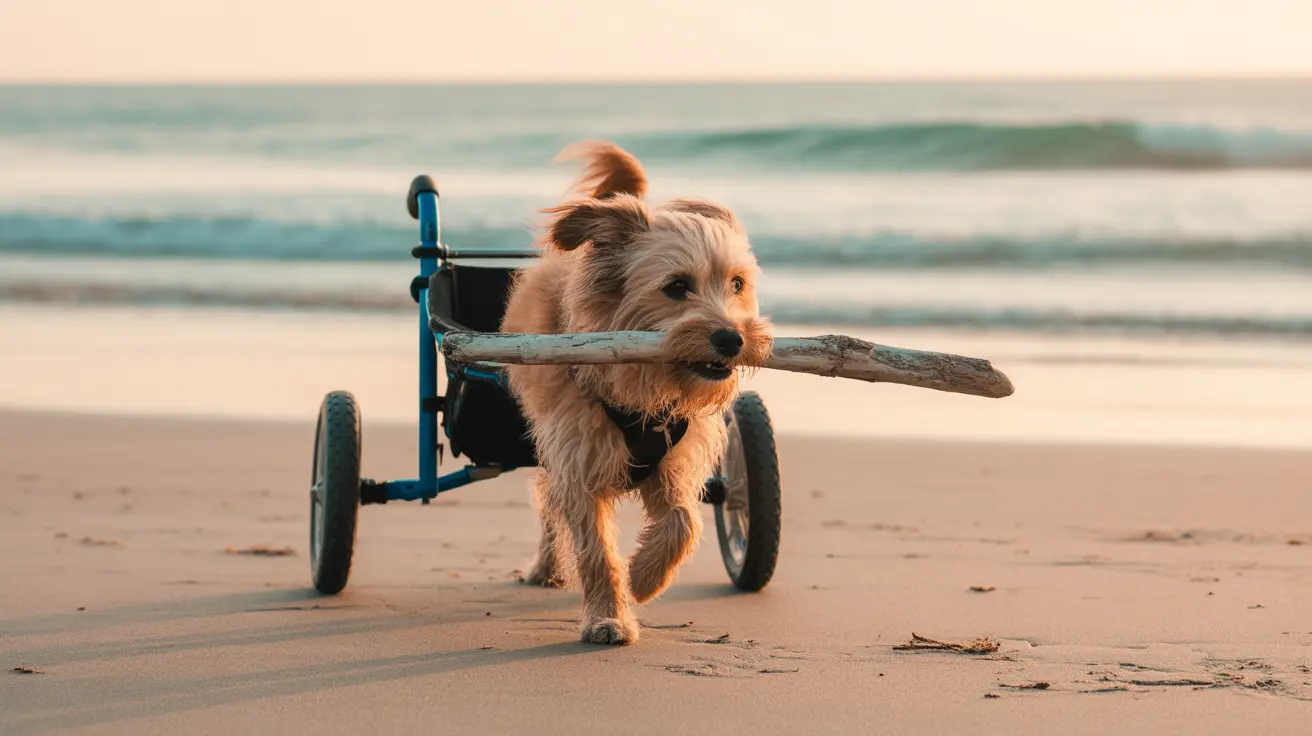In the world of animal rescue, few stories capture hearts quite like that of Cora Rose, a remarkable bipedal dog who has transformed from a rescue case into an inspiration. This extraordinary canine, who walks on her hind legs after losing her front limbs, demonstrates the incredible resilience and adaptability that makes rescue dogs with special needs such powerful ambassadors for hope and perseverance.
Cora Rose's journey highlights the transformative work being done by organizations dedicated to disabled pet care, proving that physical differences don't diminish a dog's capacity for joy, friendship, and love. Her story resonates with pet parents everywhere, showing how animals can overcome seemingly insurmountable challenges with the right support and care.
Disabled Dog Care: Understanding Amputee Dog Recovery
Caring for amputee dogs like Cora Rose requires specialized knowledge and patience. When dogs lose limbs, their bodies possess remarkable ability to adapt, often developing new ways to move and navigate their environment. The recovery process typically involves both physical rehabilitation and emotional support to help these resilient animals adjust to their new reality.
Professional canine physical therapy plays a crucial role in helping disabled dogs build strength and confidence. Veterinary rehabilitation specialists work with these animals to develop muscle tone, improve balance, and teach new movement patterns that allow them to live full, active lives despite their physical challenges.
Marley's Mutts Dog Rescue: Supporting Special Needs Animals
Organizations like Marley's Mutts Dog Rescue specialize in providing comprehensive care for animals with unique needs. These rescue groups understand that disabled dogs often require extended rehabilitation periods, specialized medical care, and patient training to help them adapt to their circumstances.
The work these rescues perform goes beyond basic animal care, encompassing emotional rehabilitation, socialization, and preparation for eventual adoption by families who understand the commitment required for special needs pets.
Dog Limb Amputation Adaptation: Natural Resilience
Dogs demonstrate remarkable adaptability when faced with limb loss. Their natural resilience allows them to develop compensatory behaviors quickly, often surprising veterinarians and caregivers with how rapidly they adjust to bipedal movement or three-legged locomotion.
While dog prosthetics alternatives exist, many amputee dogs thrive without artificial limbs, developing their own unique styles of movement that allow them to run, play, and interact with other animals. Disabled dog mobility aids, when needed, can include supportive harnesses, wheelchairs, or other assistive devices designed to enhance their quality of life.
Animal Friendships Disabled Dogs Form
One of the most heartwarming aspects of Cora Rose's story is how disabled dogs can form meaningful bonds with their canine companions. Physical differences don't prevent these animals from developing strong social connections, often creating friendships that transcend their individual challenges.
These relationships provide emotional support and companionship that aids in the healing process, demonstrating that dogs judge each other not by physical appearance but by character and compatibility.
Emotional Benefits of Adopting Special Needs Pets
Families who choose disabled pet adoption often discover profound rewards beyond the satisfaction of helping an animal in need. These relationships teach valuable lessons about resilience, acceptance, and unconditional love while providing unique bonding opportunities that strengthen family connections.
Special needs pets often display exceptional gratitude and affection toward their adoptive families, creating deep emotional bonds that enrich everyone involved in their care.
Frequently Asked Questions
How did Cora Rose adapt to living without her front legs, and what kind of rehabilitation helped her?
Cora Rose developed bipedal movement naturally, using her strong hind legs to navigate her environment. Professional canine physical therapy likely played a crucial role in building her core strength and balance, while patient rehabilitation helped her gain confidence in her new mobility style. Rescue organizations typically provide comprehensive support including medical care, physical therapy, and emotional rehabilitation to help disabled dogs adapt successfully.
What special care and considerations are needed for dogs who have lost limbs like Cora Rose?
Amputee dogs require specialized veterinary care, including regular monitoring of their remaining limbs for stress-related issues. They may need modified exercise routines, supportive surfaces for better traction, and possibly mobility aids depending on their specific needs. Emotional support during the adaptation period is equally important, along with patience as they learn new movement patterns.
Can disabled dogs, such as those who walk on two legs, form strong friendships with other dogs?
Absolutely. Physical differences don't prevent disabled dogs from forming meaningful relationships with other animals. Dogs typically interact based on personality and energy levels rather than physical appearance, allowing disabled dogs like Cora Rose to develop normal social bonds and friendships that provide emotional support and companionship throughout their lives.
Conclusion
Cora Rose's inspiring journey from rescue to beloved companion illustrates the extraordinary resilience of animals facing physical challenges. Her story reminds us that with proper care, rehabilitation, and love, disabled dogs can live fulfilling lives filled with friendship, joy, and purpose.
For pet parents considering special needs adoption, stories like Cora Rose's demonstrate the profound rewards of opening hearts and homes to animals who may need a little extra care but offer immeasurable love in return.






